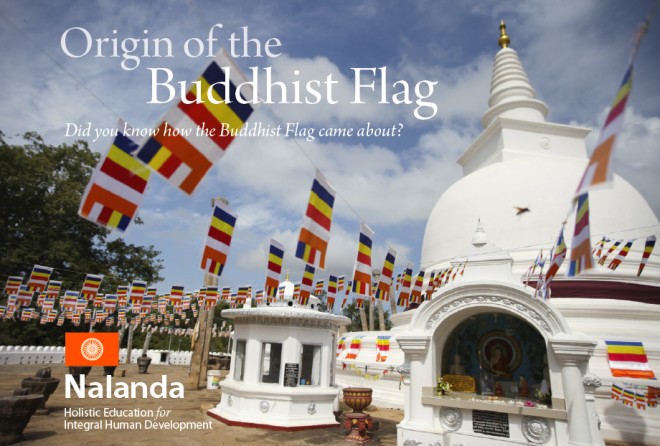History of the Buddhist Flag
History of the Buddhist Flag

First hoisted in 1885, the Buddhist Flag has since evolved into today's universal icon of Buddhist faith.
The Buddhist Flag was first hoisted in Sri Lanka on Wesak Day, 28 April 1885, when the country was still under British colonial rule. At that time, the majority Sinhalese Buddhist population felt discriminated against by the colonial authorities when carrying out their religious activities, as well as pressurized by relentless foreign evangelism. The Buddhists needed an icon to peacefully rally around, and hence, the idea of the ‘Buddhist Flag’ was conceived.
The six-coloured flag’s design was adopted in March 1885 by the ‘Colombo Committee’ chaired by prominent Sri Lankan monk, Ven. Hikkaduwe Sri Sumangala Thero. The well-known American Theosophist Colonel Henry Steel Olcott later suggested that the flag’s original streamer design be modified to match the size and shape of national flags. Thus the amended Buddhist Flag – the one we commonly see today – was unveiled in Japan in 1889.
At the World Fellowship of Buddhists conference in 1952, the flag was unanimously adopted by the international delegates as the universal symbol of Buddhist faith. Since then, it has been flown on important occasions and at Buddhist events, especially around Wesak Day.

